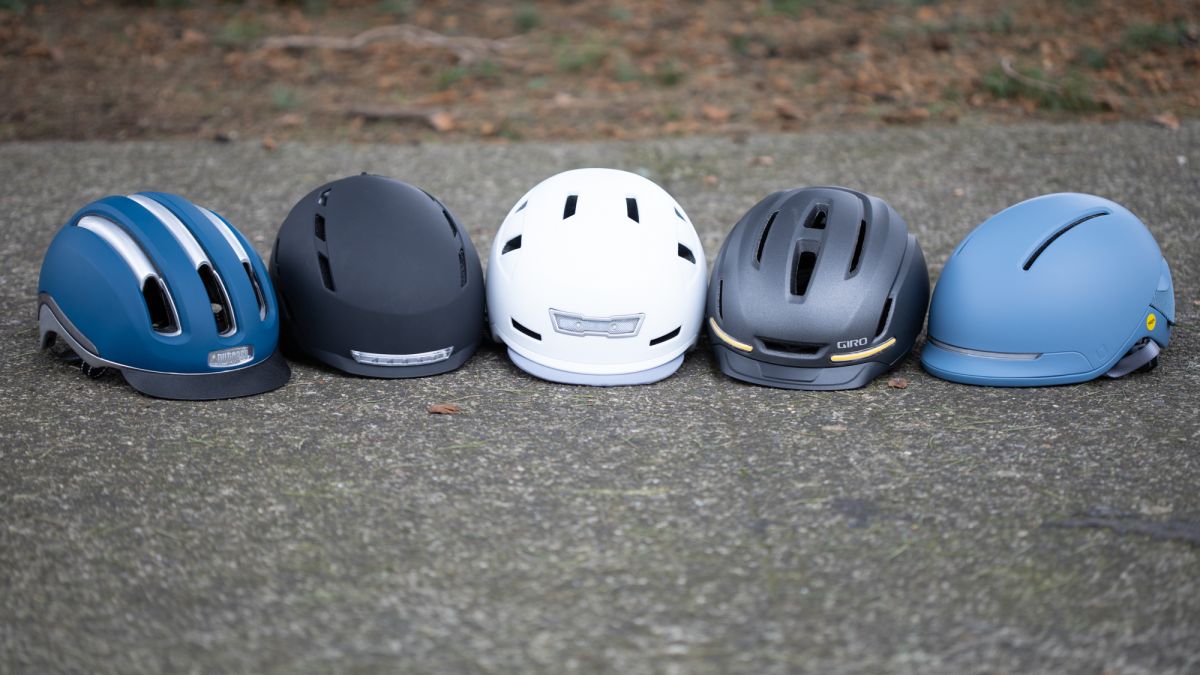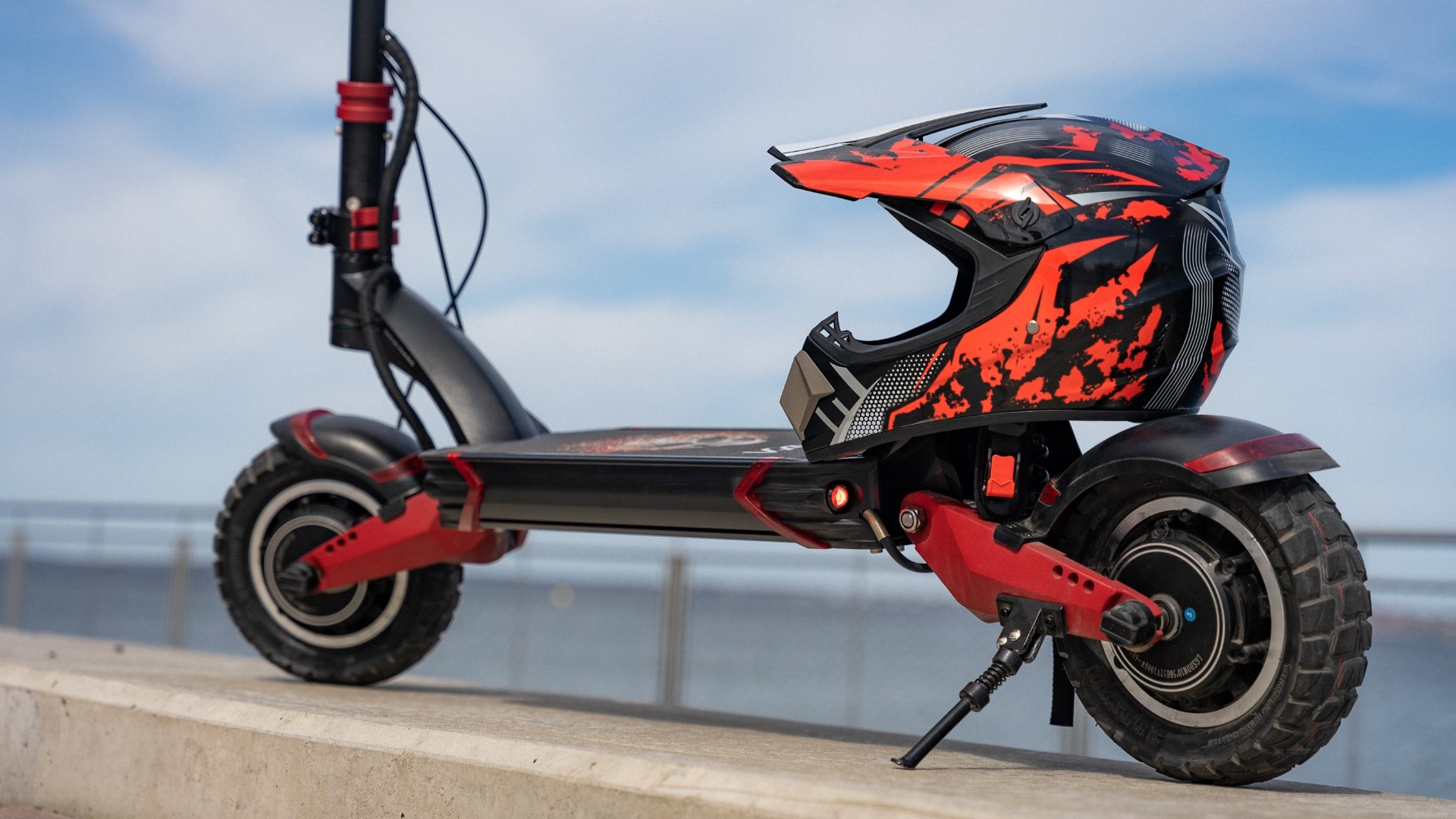Are you looking for the right helmet to ensure your safety while riding an electric scooter? You came to the right place.
In this guide, you will find great tips and advice on how to choose the ideal helmet for electric scooters, and make sure that your ride is protected.
Electric scooter is a two-wheeled, motorized, kick-scooter and has emerged as a trendy mode of transportation nowadays. It is easier to commute short distances with an electric scooter due to its light weight and convenience. However, just like any other riding vehicle, electric scooters come with certain inherent risks such as accidents and head injuries. Hence it is advisable to always wear a helmet while riding the electric scooter.
In the following sections we will highlight some of the important aspects associated with wearing a helmet while commuting on an electric scooter.

Importance of Helmet for Electric Scooter Riders
Safety should be the primary concern for electric scooter riders. Many accidents occur when a rider is not safe while riding his or her electric scooter. Wearing a helmet while riding an electric scooter is one of the basic yet very important precautionary measures that one should take. A helmet can be lifesaver; it protects your head and face against injuries in case of an accident.
Much like biking, having a quality helmet with proper padding and fit is essential for any electric scooter rider to get the full safety benefits it provides. When shopping for helmets, look for ones that meet standards set by national safety organizations like ASTM (American Society for Testing and Materials) and CEN (European Committee for Standardization). Check which helmet fits well before buying it with the proper size, measure circumference of your head from just above your eyebrows to a spot in the back of your head near the base of neck.
Helmets are designed to hold up against impacts, however they eventually show signs of wear and tear due to weather, usage and other factors. Replace your helmet every 3-5 years even if it looks fine on outside—it may have incurred structural damage on inside that you can’t see with naked eye –to ensure its safety performance in case of emergency situation unlike cars whose essential parts are regularly checked when done service without fail. Similarly use helmets even in little rides such as going out to shop groceries–safety should not be compromised.
Features to Consider
It is essential to consider the different features of a bike helmet before you make a purchase. A lot of things may be at stake depending on your choice, and it is better to be informed on the bike safety gear you are investing in. This section will help you learn more about what to look out for while buying a helmet.
Head Circumference: The circumference of your head should match the size range recommended by the manufacturer for the helmet you buy. Usually, these sizes are expressed in centimetres or inches and help provide an accurate fit for your head size. You can even measure your head circumference using a flexible tape or ruler by wrapping around it from above the eyebrows all the way around your skull at its widest point just above your ears.
Weight: Most helmets have lightweight, yet hard-shell design making them easy and comfortable to wear, regardless of movement or speed. It is important to take note that heavier helmets are safer as they tend to offer more protection compared to lighter ones should an accident occur. Additionally, some helmets come with adjustable liners which allow wearers to customize their fit and optimize comfort while maintaining a secure fastening that provides extra protection.
Ventilation: All motorcycle helmets will come with ventilation holes that allow air to circulate inside them helping keep riders safe from heat stroke during hot days or long rides due to excess perspiration accumulation resulting in headaches or dizziness. Additionally, well-ventilated helmets provide ample coverage over sensitive parts such as neck and face areas while riding reducing fatigue fatigue suffered from excessive wind buffering when going at high speeds but also increase power consumption because of increased drag caused by wind resistance thus reducing battery charge times when riding electric scooters.
Material and Construction
Selecting an appropriate helmet for your electric scooter is of utmost importance as it can help protect your head in case of any accidents. There are various materials and construction techniques used for making helmets, each offering different levels of protection.
Popular materials using for making a helmet for electric scooter include expanded polystyrene (EPS), expanded polypropylene (EPP), and the harder thermoplastic shell. EPS foam helmets are the most common ones, with EPO and EPP being more robust than EPP and comparatively lighter. The hard thermoplastic shell offers additional strength and durability through integrated reinforcement layers like carbon fibre, Kevlar or fibreglass composites. It also helps to keep the helmet from becoming brittle over time due to impact shock absorption.
The construction process of a helmet also plays an important role in determining its overall quality. Good construction techniques generally include ventilating ports that help maintain internal temperature, ear pieces that offer better sound clarity, interchangeable cheek pads offers added comfort inside the helmet, and various fastening mechanisms such as quick release buckle to make putting on and taking off easy. Additionally, all helmets must have certification labels like DOT (Department of Transportation) or Snell which ensures that they meet safety standards laid down by US authorities.
Size and Fit

Properly sizing and fitting your helmet is critical to ensuring your safety while riding an electric scooter. Helmets come in models designed to fit different head sizes and shapes, so it’s important to find one that fits properly on your head. A helmet should fit snugly, but not too tight, so that it doesn’t slip off or slide around while you’re riding. It should also provide sufficient padding around the chin and forehead areas for comfort and safety.
Once you’ve found a helmet in the appropriate size range, there are a few adjustments that can be made to further customize how the helmet fits on your head. Most helmets feature adjustable straps and buckles located at the lower neck area for a secure fit. Buckles should be adjusted until they firmly touch just below the earlobe or on the lowest point of both ears for a proper fit. There are also adjustable clips at the back of many helmets that allow precise tightening or loosening as needed. Lastly, some helmets have built-in dials or rotators that can be adjusted from either side of the head to ensure proper centering when worn correctly.
Maintenance and Care
Proper maintenance is a must for any technical product, especially when cost and safety are a concern. Electric scooter helmets should be treated with special care in order to ensure maximum protection for the rider. Here are some essential steps to help you preserve your helmet’s safety:
Cleaning – After every use, clear off all external surfaces with a wet cloth and let it air dry. Use only mild detergents if the helmet needs deep cleaning.
Position – Ensure that the helmet always fits snugly on your head when you wear it. Having a loose fit could significantly decrease its level of protection in case of an accident or fall.
Storage – Avoid keeping the helmet in extreme temperatures as prolonged exposure can damage its physical integrity and structural durability, compromising its protective value.
Inspections – Carefully inspect your electric scooter helmet every time before you wear it, looking particularly at its exterior structure and adjustability straps to ensure they have not been modified or damaged between uses – it only takes one ride without proper protection to change your life forever!
Cleaning
Cleaning your electric scooter helmet is an essential part of owning and using it correctly. Regularly cleaning your helmet ensures it looks good and provides peak safety performance.
When cleaning, use a soft-bristled brush to remove dust, dirt, and debris from the outer surface of the helmet. Gently scrub away any stains with a mild detergent or warm water mixed with soap. After scrubbing, rinse off the area with clean water and pat dry with a clean cloth. Allow it to air dry before putting it back on or storing it away for future use.
If you need to remove any stickers on your helmet for cleaning or customization purposes, be sure to use a heat gun set at the lowest temperature possible and avoid going over the same area multiple times as this may cause damage to the underlying material.
Storage
Properly storing your helmet is important, as it will help ensure the longevity of your safety gear. After each use, be sure to clean the helmet. For dirt and dust, a soft cloth or sponge can be used with mild soap and water. However, never use cleansers which include chemicals or solvents such as alcohol and acetone for for cleaning a helmet, as these can damage the shell of your helmet irreparably.
Once it is dry, store it in a place that doesn’t get direct sunlight or heat. Heat can degrade the material properties and make them less effective over time. Also, don’t keep the helmet on display high up on shelves; if it falls off from a height exposed to direct sunlight or heat, it could become damaged almost instantaneously due to its weight! To prolong its life even further, keep an anti-UV/anti-moisture sheet on top of the helmet when stored away in order to protect its exterior shell.
Choosing the Right Helmet for You

Choosing the right helmet for your electric scooter is important for your safety and comfort. The following are some of the most important things to consider when selecting your helmet.
Size: When it comes to helmets, size is critical. You want a helmet that fits snugly without being overly tight or uncomfortable. In general, you should choose a helmet that measures 58 cm or less in circumference. A good fit is especially important considering the size of electric scooters and their average speeds, making collisions much more likely.
Design: Not all helmets are designed with the same technology and features. Look for a lightweight model with safety straps and adjustable fit design features. This will ensure that the helmet stays in place even if you experience an unexpected jostle on your scooter journey.
Ventilation: Ventilation is important for both comfort and safety when riding an electric scooter, particularly in hot weather when sweat can build up quickly under a traditional cycling helmet. Look for helmets that feature a number of air vents designed to keep you cool even at higher speeds.
Protection Level: Choose a helmet that has been tested to meet safety standards, such as SNELL B95 or DOT FMVSS-218 standards in the USA or EN 1078 standards in Europe All certified (and thus safe) helmets will feature permanent labels which contain information about certification levels passed, manufacturer contact information and other important details related to each specific model Helmet Visor : Consider adding a visor to your electric scooter helmet as well; this may help protect against dirt, windblast or other airborne threats while riding at speed—enhancing both visibility and protection during each ride.
Factors to Consider
When choosing an electric scooter helmet, there are several factors to consider. Safety should always be the priority, but other factors, such as comfort, ventilation and noise reduction, are also important in selecting the right helmet. As a general rule, it’s best to look for helmets that are approved by DOT (Department of Transportation) or SNELL safety ratings. Here is a handy guide with advice on what to look for when selecting a helmet for electric scooter commuting:
Safety: Look for helmets that exceed DOT and SNELL standards and have been tested in rigorous conditions. If possible, select a multi-impact helmet with an expanded polystyrene (EPS) liner for greater protection against multiple impacts.
Fit: It’s important to measure your head circumference before buying to ensure you select the right size as too small or large can lead to discomfort while riding. Most helmets will come with adjustable sizing mechanisms such as Dial Fit systems so you may be able to make some adjustments after purchase if necessary.
Ventilation: Naturally ventilation is important when riding in hot environments as excessive heat can lead to perspiration which leads to discomfort whilst riding! Look for helmets with adequate air flow which can be achieved by multiple vents along the shell of the helmet created by structural foaming techniques, or removable winter linings and built-in fan systems.
Noise Reduction: Selecting a noise-reducing helmet is essential for electric scooter rides; even at low speeds wind noise can accumulate quickly and lead to ear damage if not protected from properly from high quality earmuffs or padded lacers inside the lid of your helmet.
Tips for Trying on Helmets
Once you have selected your helmet, it’s time to try it on. Here are some tips for making sure it fits just right:
- Make sure the helmet is level on your head above your eyebrows and that the side straps form a “V” shape around your ears.
- Adjust the side straps so that they comfortably but firmly fit under each ear. The rear strap should fit snugly below the ear lobe yet still comfortably fasten under the chin.
- Before tightening, slide two fingers underneath all of the straps to make sure that you can feel contact with your skin for proper closure without discomfort. Do not over-tighten!
- Carefully test it by shaking your head quickly from side to side — if it moves or falls off in any direction at any point, readjust until you have a secure fit with no gaps of more than one finger width between your face and the helmet padding around the entire circumference of your head including across forehead and around temples on either side of eyes.
- Lastly, once all adjustments are complete buckle up and go for a ride!
Conclusion

It’s safe to say that wearing a helmet for electric scooter riders should be viewed as essential, regardless of the laws and regulations in your state or country. Ultimately, the purpose of any type of helmet is to protect you if an accident occurs. No matter how well you are able to handle your vehicle, there are always potential scenarios where you may require additional head protection.
Helmet choice is a very personal decision that should be informed by your lifestyle and budget. Make sure to consider both safety ratings and comfort when selecting a helmet. Start with the ones on this list and then do some research on helmets specific to your riding style if needed. Staying safe while commuting is vital, so make sure you invest in a decent helmet and get out on the roads as safely as possible!
FAQ’S
What helmet should I wear on an electric scooter?
You should wear a helmet that is specifically designed for electric scooter riders. Look for a helmet that is lightweight, comfortable, and provides adequate protection to your head and face.
Should I get a helmet for an electric scooter?
Yes, it is highly recommended to wear a helmet while riding an electric scooter to protect yourself from head injuries in case of an accident.
What protection to wear for electric scooter?
Apart from a helmet, it is recommended to wear additional protection such as elbow and knee pads, gloves, and sturdy shoes while riding an electric scooter to protect yourself from injuries.
How do you secure an electric scooter from theft?
You can secure your electric scooter from theft by using a strong and durable lock, parking it in a well-lit and busy area, and removing the battery or other valuable parts if possible.
Do eBikes require special helmets?
Yes, eBikes require special helmets that are designed to meet the safety standards and provide adequate protection to the head and face of the rider.
Do you need a special helmet for eBike?
Yes, it is recommended to wear a special helmet that is specifically designed for eBike riders to ensure safety and protection in case of an accident.
How do I choose an eBike helmet?
When choosing an eBike helmet, look for the ones that are designed to meet safety standards, fits you well, and provides adequate ventilation and visibility.
What kind of helmet is required for an electric bike?
A helmet that is specifically designed for electric bike riders and meets safety standards is required for riding an electric bike.
Can I wear a bicycle helmet on an electric scooter?
While a bicycle helmet may provide some protection, it is recommended to wear a helmet specifically designed for electric scooter riders for optimal safety and protection.
What type of helmet should I buy for a scooter?
You should buy a helmet that is specifically designed for scooter riders, fits you well, and provides adequate protection to your head and face. Look for helmets that meet safety standards and have good ventilation and visibility.
See Also:
- Best half helmet 2023
- Best roller skate helmet 2023
- Best ballistic helmet 2023
- best open face helmet 2023
- Best football helmet 2023


